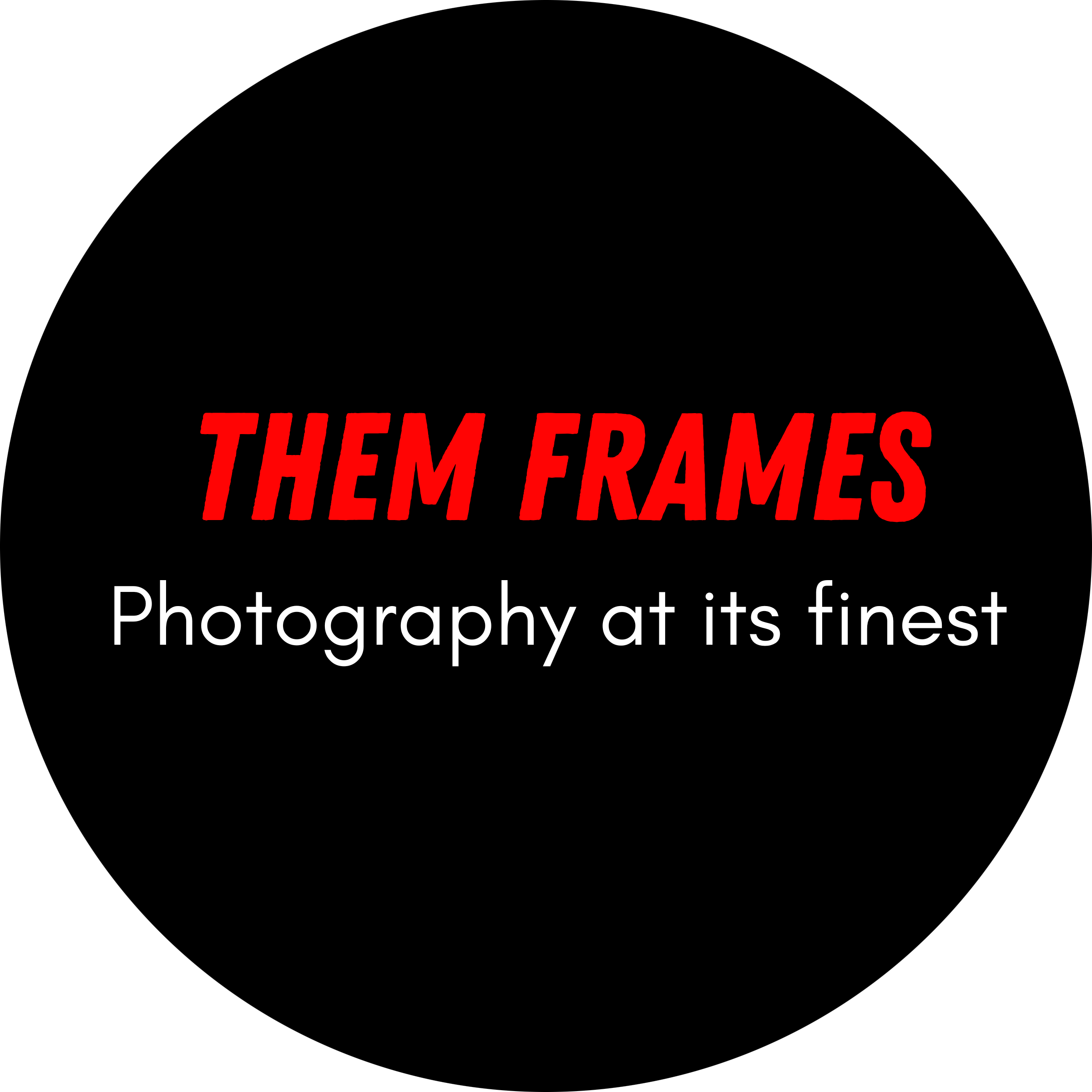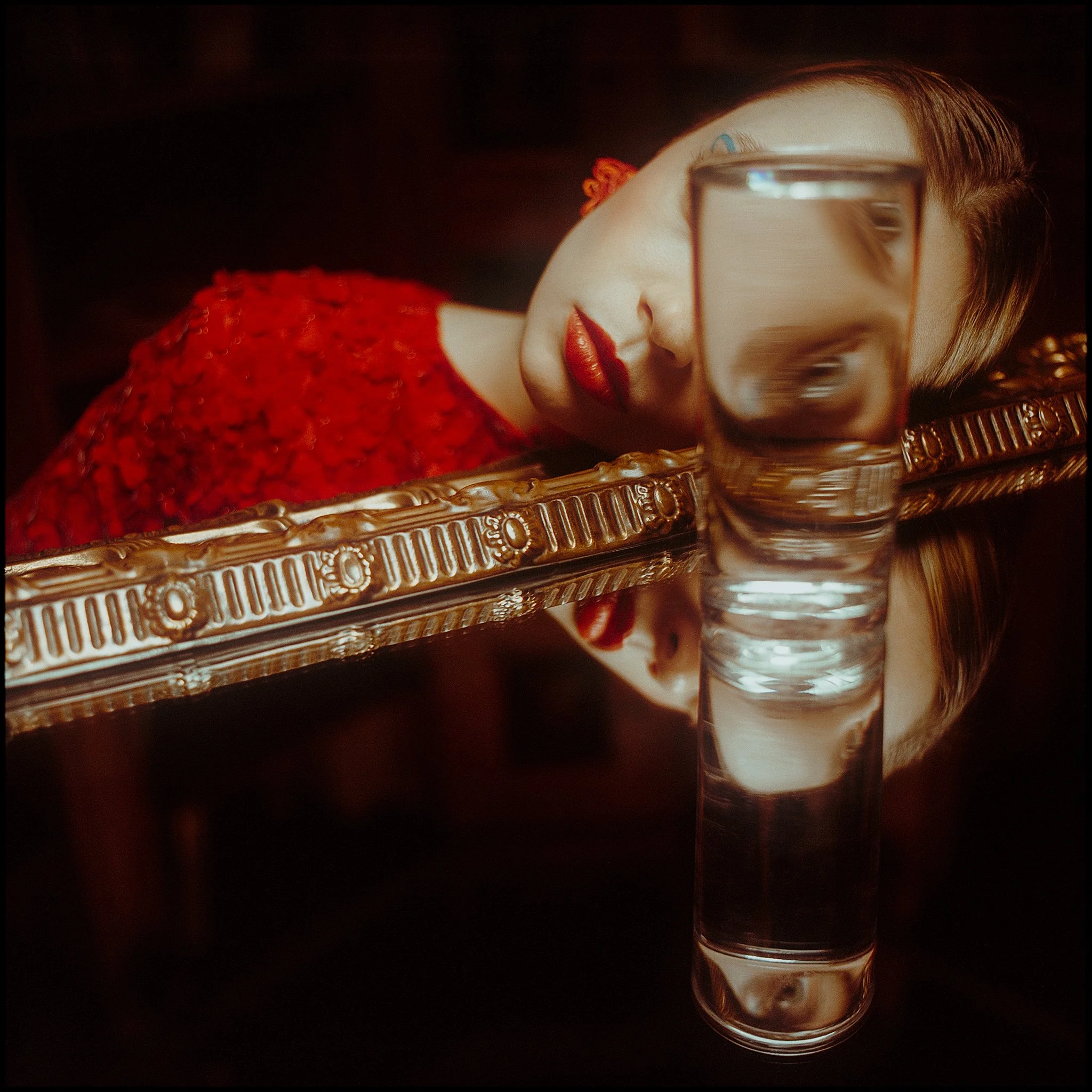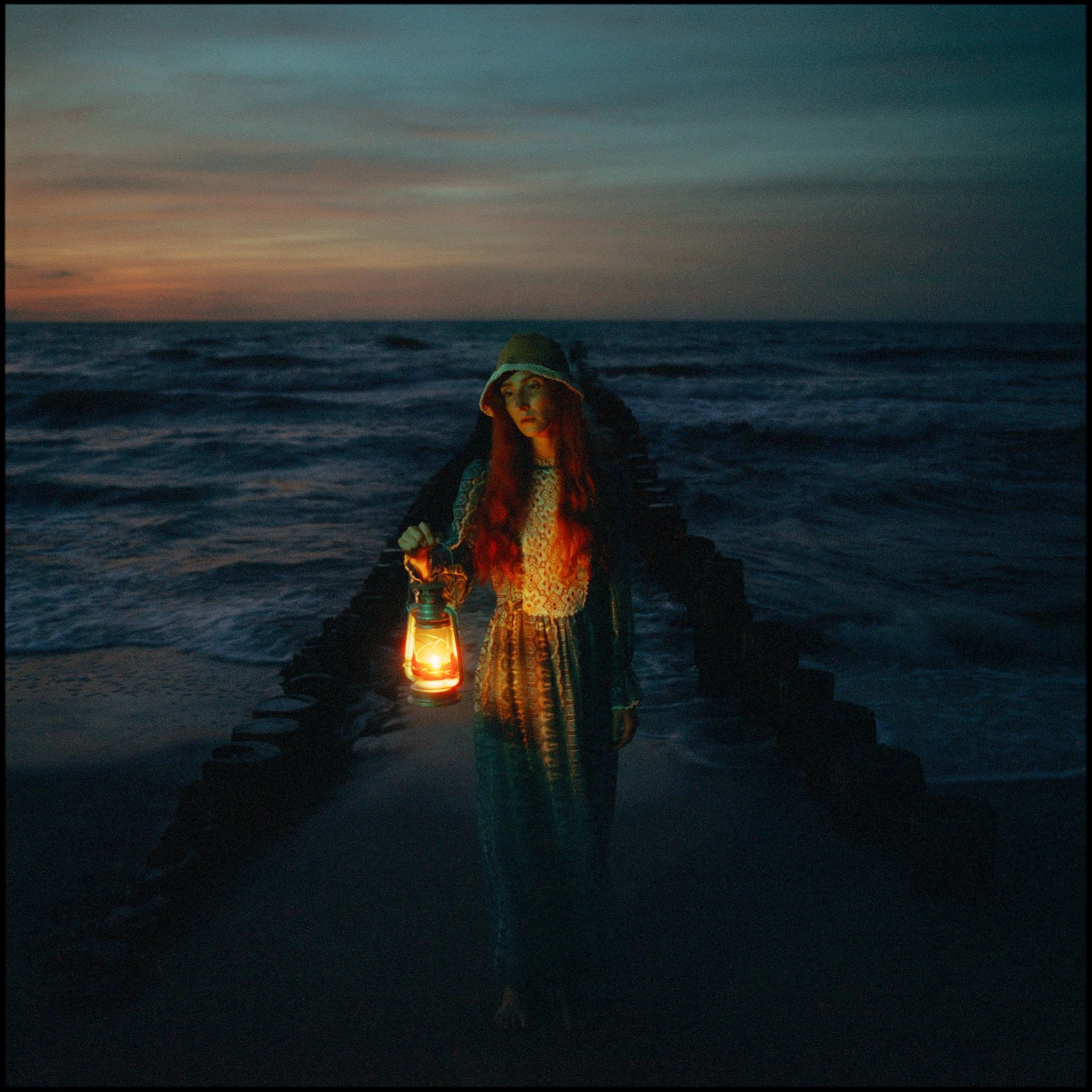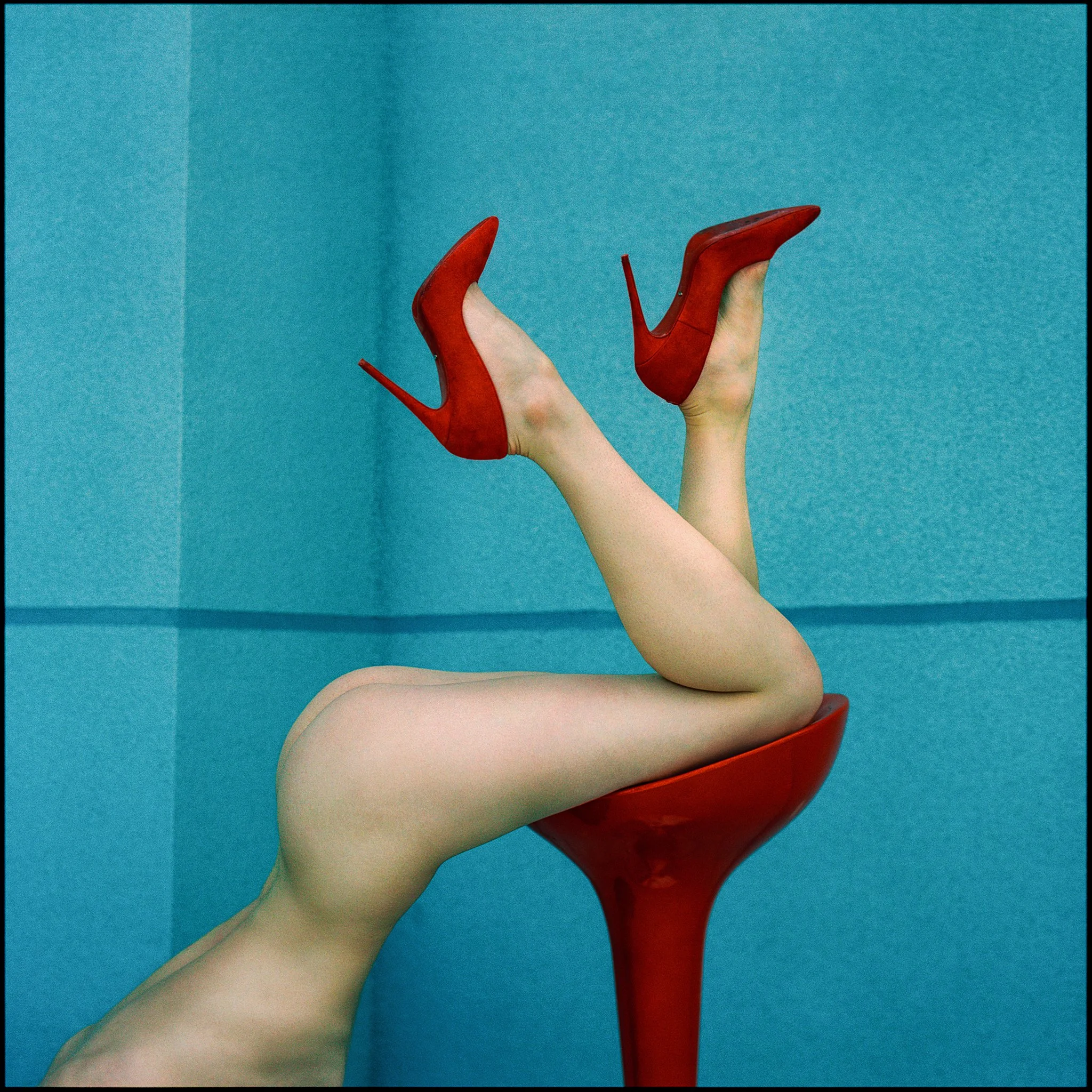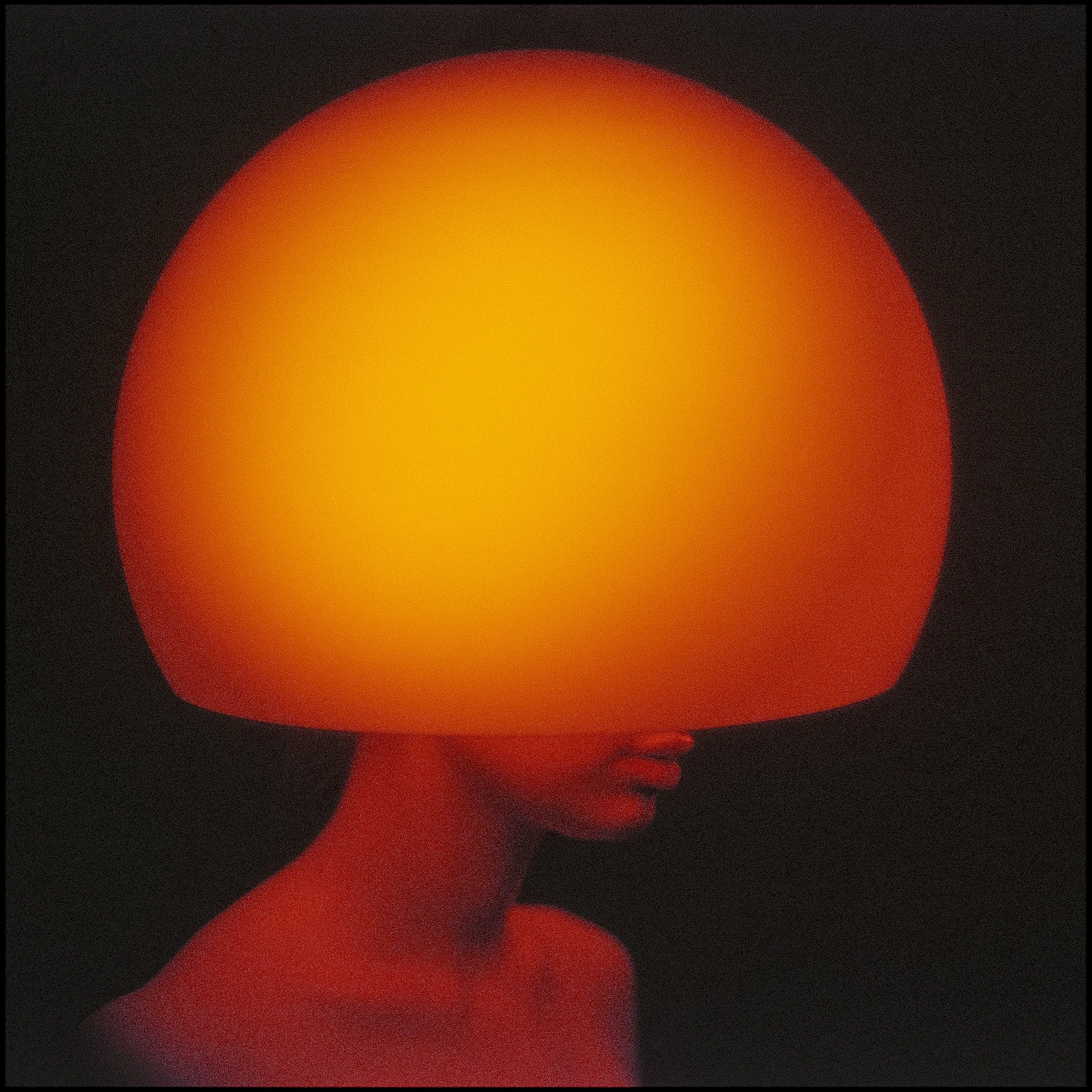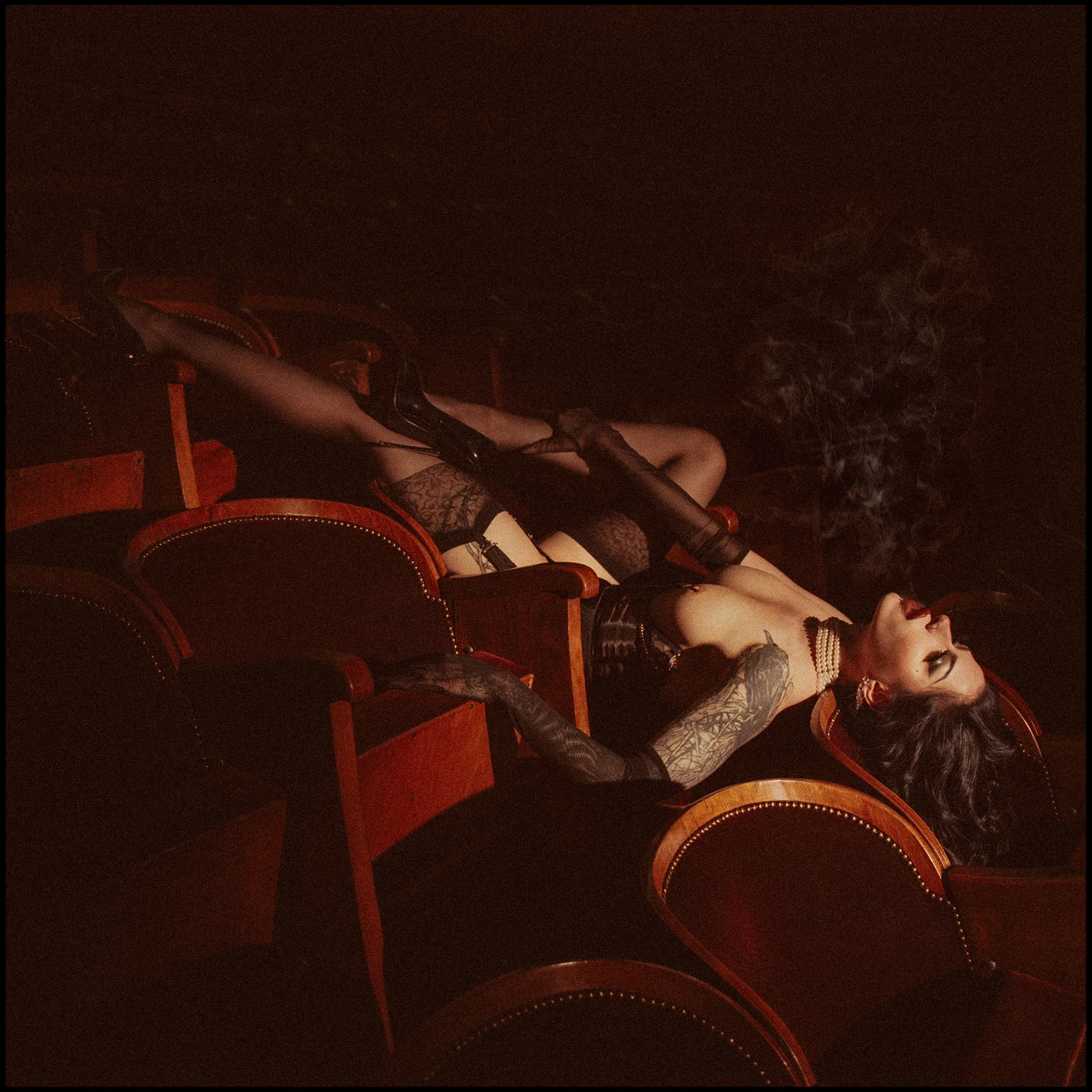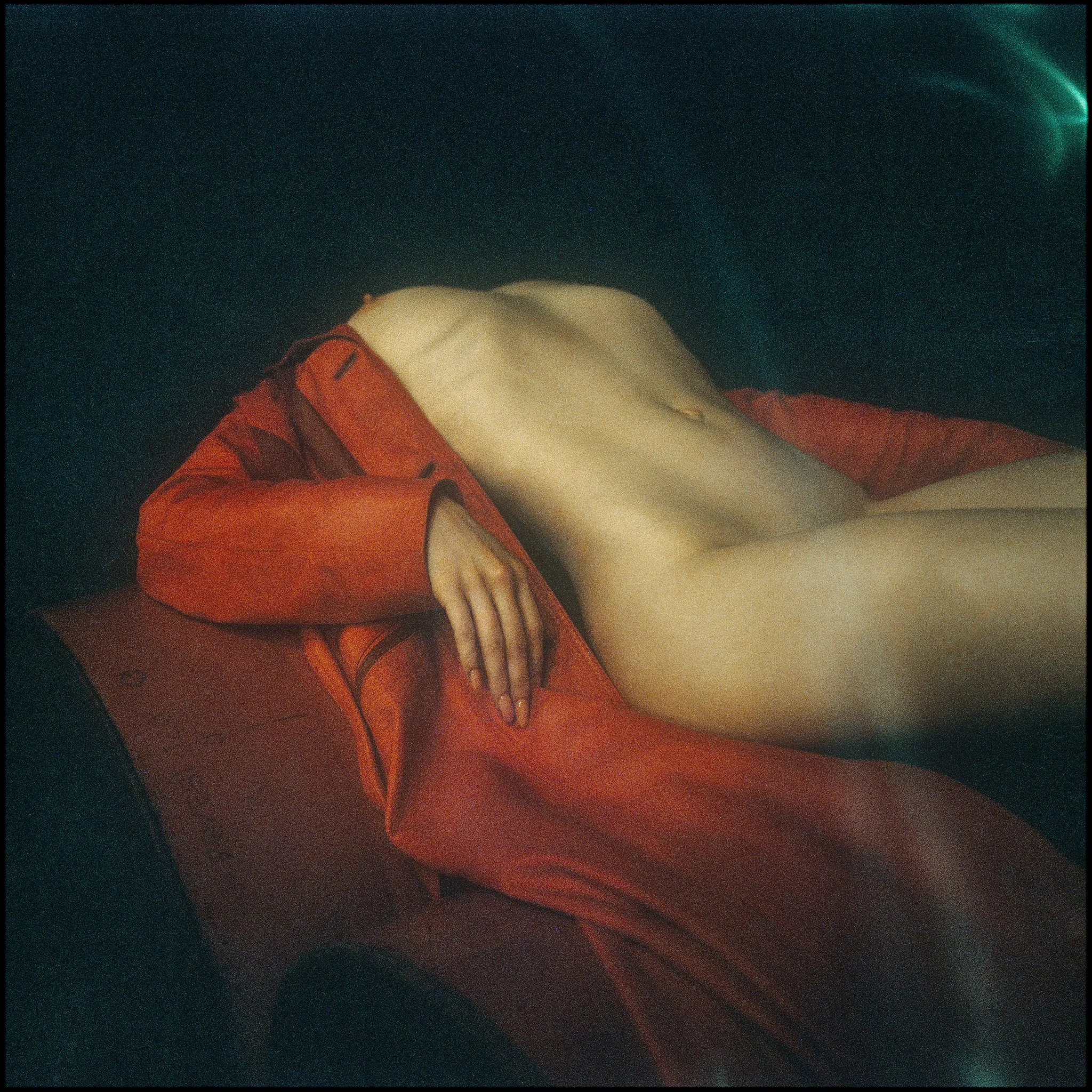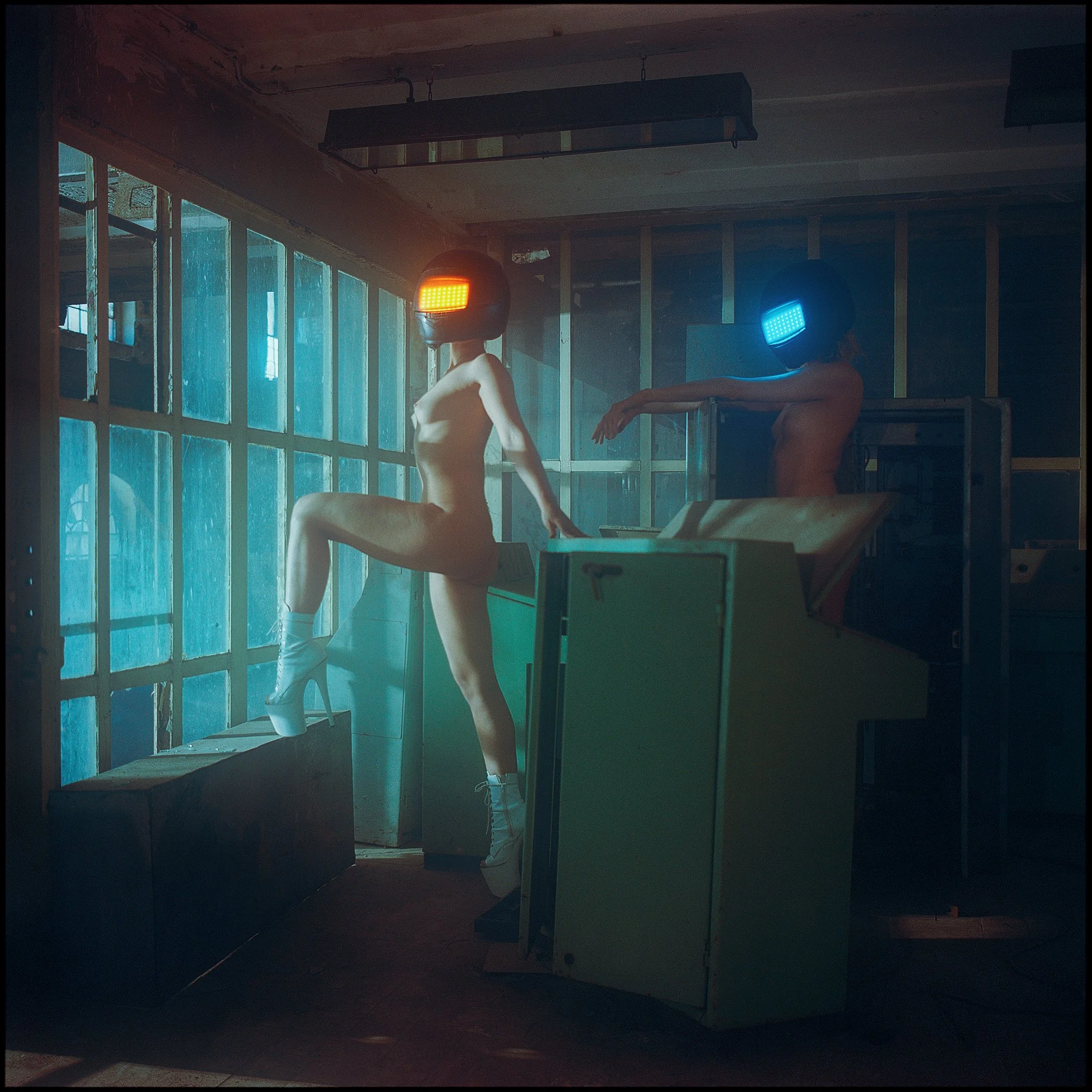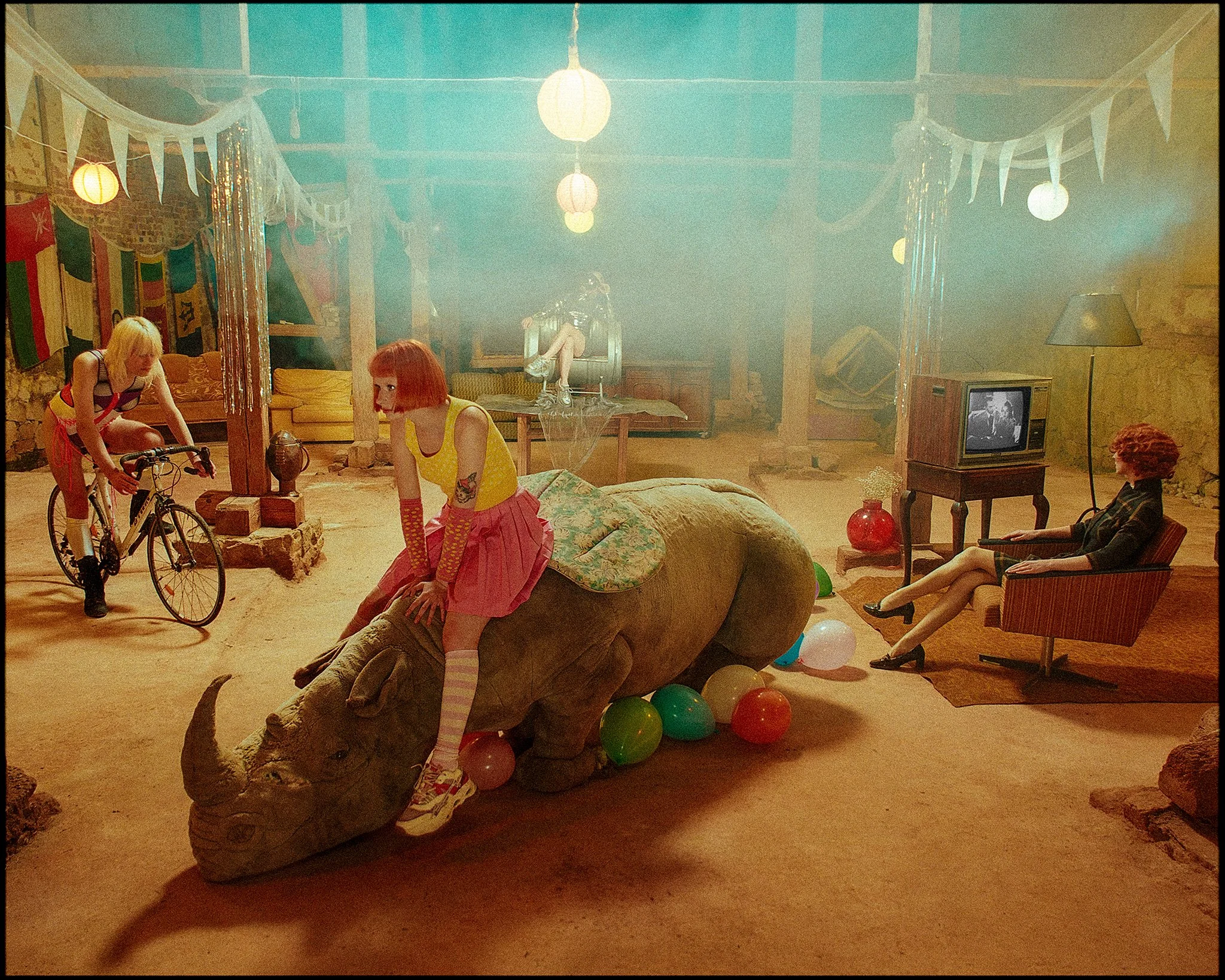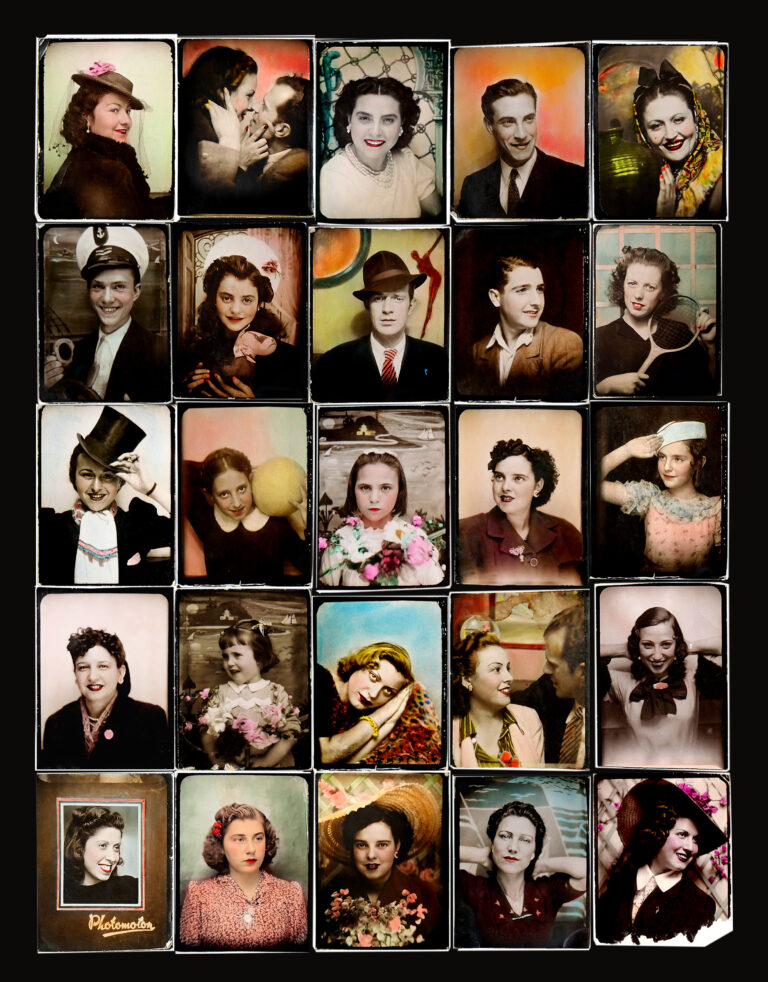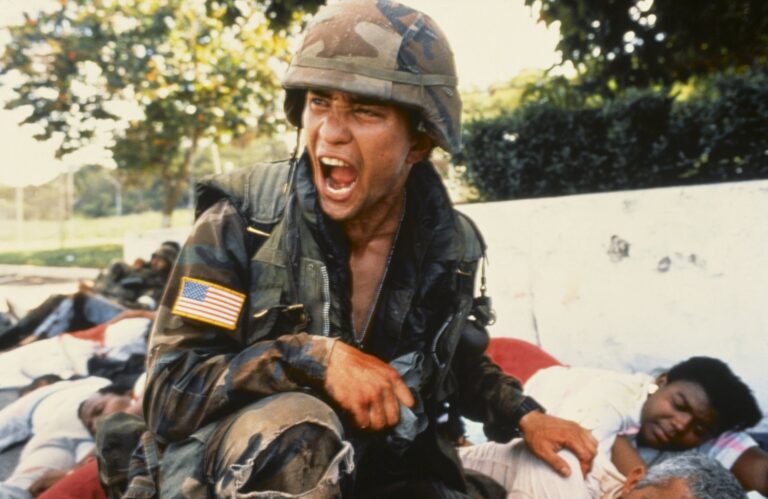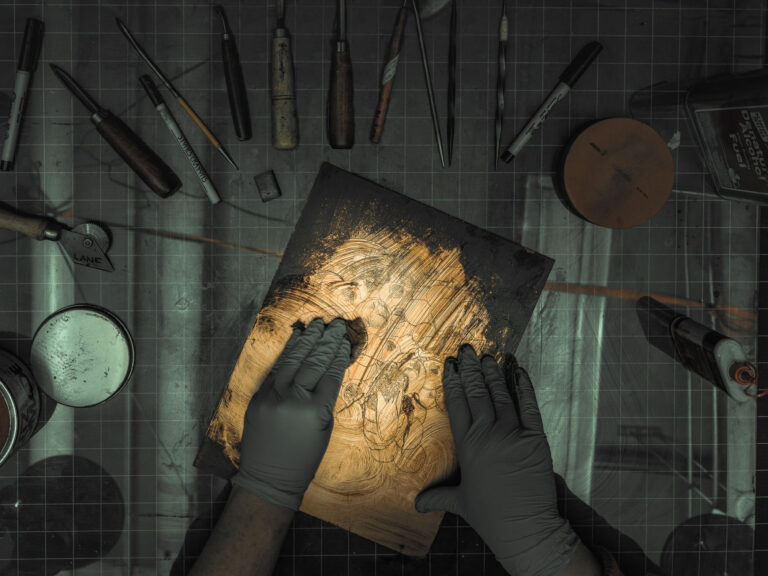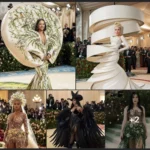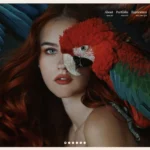All images by Łukasz Spychała. Used with permission
I’m a sucker for dark, grainy scenes with subtle pops of warm tones. I’m especially drawn into scenes that have depth and character and highlight how a photographer has delved into their mind to create something that catches the eye. Łukasz Spychała is hitting all those points, and his works pushed me to reach out and make contact.
There’s a difference between a good picture and great photography. Someone who has invested in much better gear than their iPhone and learned about bokeh can make a good picture. But someone who studies human nature, understands lighting, and isn’t afraid to get creative with their scenes will make great photography.
Spychała obviously falls into the second category. There’s so much storytelling in each frame that one is compelled to stay with it, study it, and truly appreciate its value before moving to the next shot.
Unsurprisingly, Spychała is as expressive with his words as he is with his art — I actively encourage that here at Them Frames. When you connect his words to his pictures, you’ll gain a deeper understanding of who this artist is and what motivates him.
Get 10% off photo editing software Luminar Neo by using code: THEMFRAMES10 when you sign up.
Continue reading….
Them Frames: Hey Lukasz! How do you feel about the photography you’re creating at the moment? What’s motivating you right now?
Łukasz Spychała: With every photograph I take, I feel like I’m getting closer to myself. Photography isn’t just a job or a skill for me, it’s a way to express emotions and thoughts, and a space where I can truly be myself. Each session feels like an important moment, a meeting both with myself and with another person. It’s a time when I can create with full focus, both physically and emotionally involved.
I’m becoming more interested in relationships in photography. Not only the obvious ones between two people, but also the more subtle ones: between a person and a place, between a feeling and a gesture. I want to capture the moment when the person in front of the camera stops performing and simply is. Sometimes it lasts just a second, but those brief moments feel the most real and moving to me.
I’m driven by emotions, both present and from the past. Sometimes I take photos as a way to record a memory I didn’t capture at the time, because I was too caught up in the experience. Photography helps me return to what matters and tell those stories through images.
Places are very important to me. Sometimes all it takes is stepping into a space, noticing the light, the walls, the mood, and I immediately feel the urge to create something. Often, the setting gives the photo its tone, direction, and feeling. I believe places can show us things about ourselves that we wouldn’t otherwise notice.
The viewer’s reaction matters to me too. Sometimes someone looks at a photo and says, “I feel exactly the same,” even though they don’t know the story behind it. That kind of connection gives me huge motivation. I like it when an image sparks conversation, emotions, or memories. And I don’t mind when someone interprets it differently than I do; in fact, I love that photography can speak on many levels.
I leave every session with a sense of longing, like I could’ve taken one more photo or gone a bit deeper. But that feeling doesn’t frustrate me; it fuels me. It keeps me searching for new stories and ways to express myself. To me, photography is a journey, a never-ending attempt to understand both myself and the world through images.
Them Frames: What helps inspire your creative ideas?
Łukasz Spychała: My ideas come from many different sources. I don’t have a fixed method or formula. Sometimes they appear suddenly, without warning. Other times, they take a long time to form, sparked by a conversation, an emotion, a memory, or a place that left an impression. Often, the process starts unconsciously and only becomes clear over time.
I’m inspired by things that move me, both literally and emotionally. Films, images, and sounds that stay with me. Painting has had a strong influence on me, especially Hopper, Sendor, and Beksiński, for their ways of thinking about light, space, and atmosphere. Painting has a certain stillness and depth that draws me in. It often triggers my visual thinking.
I intentionally avoid looking at too many photographs by other photographers, especially those I know. I don’t want to copy anyone, even unintentionally. I want my photos to come from an inner need, not from outside references. I want them to feel fresh and true, even if that means sometimes getting lost along the way.
People inspire me deeply: their energy, their gaze, the way they carry themselves. I often find ideas while working with models. Their presence helps shape the story I want to tell. It’s not just about who they are, but who they can become in a frame. Sometimes a single look sparks the whole concept for a photo.
Places are also very important. Some spaces have a certain energy and you feel like something is about to happen the moment you enter. I try to listen to what they “say” through light, color, smell, and texture. Sometimes the space leads the session, and I just try to stay open.
Travel is another source of inspiration, not only big trips but also everyday ones. A walk through the city, a random encounter, a book fragment, or a melody stuck in my head can be enough. What matters most isn’t the thing itself, but the emotion it stirs in me and whether I can later turn that into an image.
For me, photography is a constant search. I don’t feel the need to stick to one aesthetic. I try to create based on what I feel in the moment, what’s alive in me right now. Every photo is an attempt to understand myself, my emotions, and the world around me. Sometimes I capture something meaningful, other times I simply try. That’s what inspires me most—the fact that every time, I get to begin again and try something new.
Them Frames: How do you pitch your ideas to model(s) to help them understand your creative vision for a photoshoot?
Łukasz Spychała: I don’t have a fixed way of presenting ideas before a session; it depends on where the idea came from and what I want to express. Sometimes the inspiration is very personal—an experience, an emotion, or a specific moment in my life. In those cases, I simply share it. I speak openly and honestly, without pretending. I believe that when I’m authentic in conversation, it’s easier to build trust with the model and find a shared understanding of what we want to create.
Sometimes the idea comes from a dream or a vague vision that suddenly appeared and left a strong impression. Then I try to describe what I see in my mind—what the scene looks like, what emotions it carries, what kind of mood it has. It’s a bit like introducing a role, but without a fixed script.
I rarely prepare traditional mood boards. I don’t want to impose ready-made images that could limit imagination. If I do show something, it’s usually a photo of the location or a styling reference. The rest is a conversation that leaves room for questions, doubts, and shared exploration. I like it when not everything is fully defined, because that allows more space for spontaneity and real emotion on set.
For me, a photo shoot is a process that happens between two people. It’s not just about what I’ve imagined, but about what we feel together. Often it’s the presence of the other person—their energy, movement, or gaze—that gives shape to the idea during the session. I’m not trying to perfectly recreate a planned vision. What matters more is that something happens in the moment, that we create something real together. It’s a meeting, not just the execution of a plan. And that’s what makes every session different and meaningful to me.
Them Frames: There’s nudity in your work. How do you create a safe environment for your subjects to help them feel comfortable internally and in front of the camera?
Łukasz Spychała: I believe that when both the photographer and the model approach their work professionally, nudity doesn’t have to be difficult or tense. To me, the body is a natural part of being human, not something shameful or purely sexual. When we remove our clothes, we often reveal deeper emotions and parts of ourselves we might not have been aware of. Clothing can act as a protective mask, giving us confidence but also hiding our true selves. In nude photography, it’s the unveiling of what’s hidden that matters most.
I make sure that models feel comfortable, above all, through respect and professionalism. I pay attention to small details, like the temperature, making sure they’re not cold, and I dress in layers so I can easily adapt. I aim to create a calm, supportive atmosphere on set. When possible, I work with an assistant who helps with small things like hair or wardrobe adjustments, helping the model feel more cared for and secure.
I understand that everyone has personal boundaries and past experiences, which is why I never touch a model without clear consent. I also know that for many women, it is more comfortable if such support is provided by a female assistant, so whenever I can, I choose to work that way.
During a session, I focus on the person and the frame, not whether they are clothed or not. For me, it’s just another element of the composition. I believe this perspective helps models feel more relaxed, and allows the images to be honest and full of truth. When everyone is focused and open, a photo session can become something like meditation—a moment of deep presence, where you connect more closely with yourself and your emotions.
Them Frames: The deep and moody tone is constant throughout your portfolio. What should this tell us about your personality?
Łukasz Spychała: I’ve never tried to limit myself to one role, either as a person or as a photographer. In both life and art, I want to stay free, without rigid frames or labels, even the ones I might give myself. What some people describe as the “moody” or “consistent” style of my work is, for me, simply a reflection of my state of mind at a particular moment. It’s not something I aim for; it’s a natural response to what I feel and see.
My photography often mirrors the mood of a day: full of shadows, soft light, stillness, and emotions that are hard to put into words. I like to explore what is delicate and fleeting—what lies beneath the surface, not just what’s immediately visible.
I look for moments when the person in front of the lens stops performing and simply is, or becomes a different version of themselves. These are quiet, truthful moments that aren’t always easy to spot. Sometimes they appear in connection with someone close, when the distance between us disappears. Other times, I let the place, the light, and the atmosphere tell their own story, and I’m just there to receive and reflect it.
I don’t stick to one style because I enjoy exploring new paths and new questions. Each session feels like diving into a different story—someone else’s, but also my own. Photographs are like mirrors in which I catch glimpses of memories and emotions, sometimes old ones that still live in me.
The deep, atmospheric tone of my images isn’t something I plan. It’s just how I see the world: full of nuance, silence, and subtle meaning. And that’s also how I see myself, more of a listener than a speaker, more of someone who asks than someone who gives ready-made answers. I try to stay open to whatever comes naturally.
Them Frames: There’s so much detail in your work. How long does a typical shoot last, and how do you keep everyone motivated?
Łukasz Spychała: The duration of a session depends on many factors. There’s no single rule. Sometimes I’ve only had 15 minutes with a model and managed to take just 12 shots. In those fast, intense sessions, almost like a flash, you have to capture what matters most in a short time.
But I definitely prefer working at a slower pace, taking time to notice every detail. Sometimes it’s a slight movement of a finger, a shadow of light, or a small gesture that says more than words. In those quiet moments, I feel the photograph begins to breathe and tell a story.
I don’t work with models who don’t connect with my vision, that’s essential for me. When the idea resonates with them, their involvement and energy come naturally. It becomes a shared journey, where we’re both heading in the same direction, curious to discover something new together.
This kind of mutual understanding creates a calm and professional atmosphere, helping us stay focused and in tune. That focus and trust allow us to create something real and meaningful.
I prefer taking fewer photos, but ones that have soul and the power to move someone. Each session feels like a short film to me, a story built moment by moment. When I have the chance, I like to spend two to three hours on a shoot, so we have time to tune in to each other and bring out the best in every scene. It’s a space where we’re not rushing, but allowing the moments to unfold and noticing what really matters.
For me, photography isn’t just about capturing an image quickly. It’s a shared moment, like a silent conversation, where every look and detail counts. That’s when powerful photos are created, not through technique alone, but through a real connection and understanding.
Them Frames: If you had to pick a song or album to accompany your portfolio, which would it be and why?
Łukasz Spychała: If I had to choose music to accompany my portfolio, it would be a compilation rather than a single track or album. Like music, my photos aren’t limited to one mood or style. Each session tells a different story, with its own emotions, rhythm, and light, so I need different sounds to help me get into the right mindset and reflect that variety.
I often play music while working, but it’s not always what I listen to in everyday life. Before a session, I search for songs that match the atmosphere I want to create. The music becomes a kind of backdrop that helps both me and the model immerse ourselves in the mood, find a shared emotional language, and connect more easily with the story we’re building.
I imagine a playlist that flows naturally, from soft, moody melodies full of silence and reflection, like Jonathan Bree’s You’re So Cool or Massive Attack’s Paradise Circus, to more energetic tracks that spark creativity and movement. It’s like walking through different corners of my world—sometimes melancholic and intimate, other times lively and full of momentum.
Honestly, I don’t want to limit myself to one mood, because neither my photos nor my thoughts are one-dimensional. Music not only helps me enter a specific emotional space, but also inspires me to explore something unexpected. This kind of compilation would reflect my approach to photography: open, shifting, and full of contrasts.
Them Frames: Finally, please finish this sentence: I need photography in my life because…
Łukasz Spychała: it’s more than just a hobby or a form of self-expression; it feels like a part of who I am. My parents always had a camera nearby. My father spent hours in the darkroom, and my mother never traveled without hers, capturing images that still take my breath away.
Thanks to them, I learned early on to see the world not just with my eyes, but also with my heart—to understand that a photograph is an emotion we want to share with someone.
When we take a picture, we give others a piece of ourselves, our memories, what’s most personal. It’s like an invisible thread connecting people, letting us step into someone else’s story, even if only for a moment.
Although photography has always been part of my life, it took me a long time to find my own path. The camera wasn’t my first choice; for a while, I felt my passion might lie elsewhere.
Fortunately, my parents never pressured me to follow in their footsteps. The camera found its way into my hands only when I was ready and truly wanted it. That gave me the confidence to know that I had chosen photography, not the other way around.
Today, I’m grateful for that path, even though I know my photographs don’t always resonate with my parents. Sometimes we see the world differently and have different views on art. But there’s mutual respect and understanding between us. Often, when we look at each other’s work, we recognize shared emotions, even if we tell our stories in different visual languages.
For me, photography is more than just an image—it’s a bridge. A bridge between people, between me and the world. I need it because it allows me to be myself, to express what matters, and to connect with others in a way that words often cannot.
You can enjoy more work by Łukasz Spychała by visiting his website and Instagram.
More reading: How Iness Rychlik Conquers Pain and Insecurity Through Self-Portraiture
Want your work featured on Them Frames? Pitch us.
